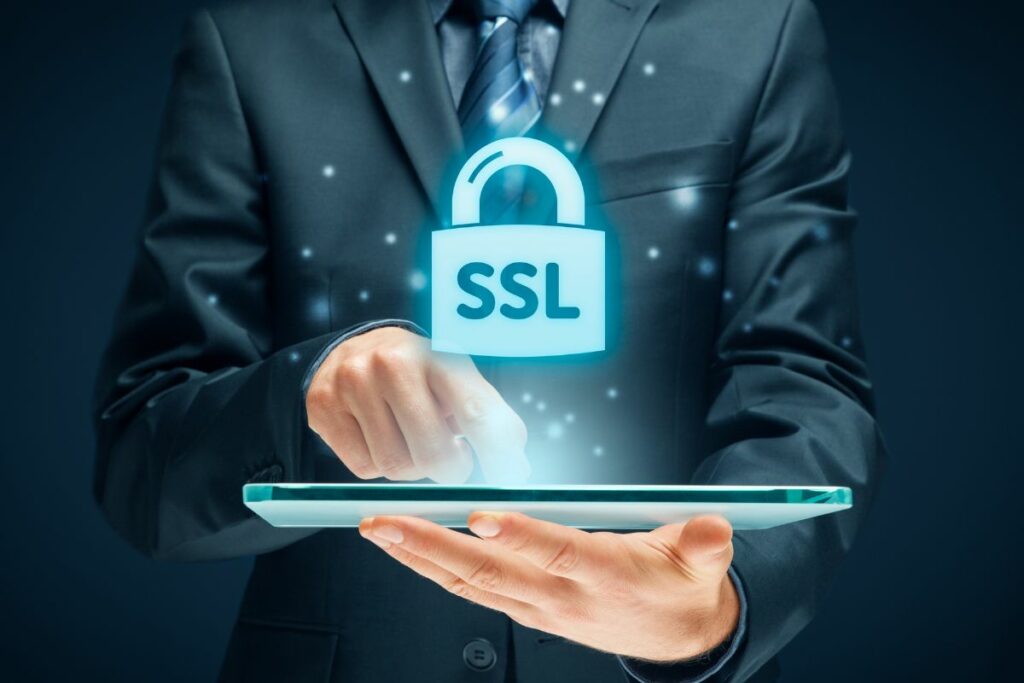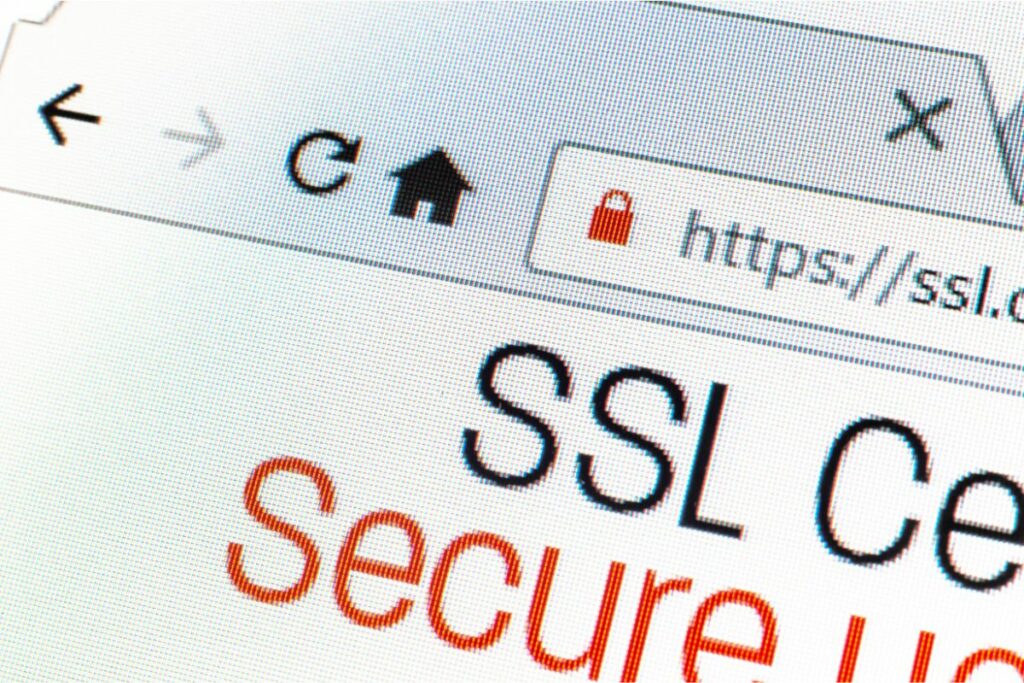An SSL certificate is a security feature that allows web browsers to verify the authenticity of websites they visit and is an important element of any serious website.

Read on to learn all you need to know about SSL certificates, including the steps that you need to take to add one to your site.
What Is An SSL Certificate?
An SSL (Secure Sockets Layer) certificate is a digital signature issued by a trusted authority that verifies the identity of a website or server.
It is used to encrypt data between a user’s browser and a web server so that it can be safely transmitted across the Internet.
The information encrypted with an SSL certificate is not visible in plain text to anyone who does not have access to the private key associated with the certificate.
SSL certificates have a number of uses, and the most common include:
Encrypting Credit Card Numbers
One of the most common uses of SSL certificates is to encrypt credit card numbers when shopping online. This prevents hackers from stealing your credit card details while they are being transferred over the internet.
When you enter your credit card details into a secure form on a website, the data is sent to the website’s hosting provider as unencrypted data.
If the website has been hacked, then this data could easily be intercepted and stolen. However, if the website has an SSL certificate installed, then the data will be encrypted before it leaves the computer.
Hackers cannot read the data because they do not have the private key required to decrypt it.
Protecting Passwords
Another popular use for SSL certificates is to protect passwords. For example, if you are using a password manager like LastPass, then it will automatically generate strong passwords for you.
These passwords are stored securely within the program, but they must still be entered each time you log into a new account. If you were to type these passwords into a public place such as a forum or comment section, then someone else would be able to see them.
However, if you had an SSL certificate installed on your website, then the passwords would be encrypted before they left your computer. Hackers would not be able to view them because they do not have access to the encryption keys.
Authenticating Your Website
A third use of SSL certificates is to authenticate your website. This means that visitors to your website will be able to trust that the website is genuine.
f a visitor enters their email address and name into a contact form on your website, then they expect that their personal details will only go to the company that owns the domain name.
They may also want to ensure that no one else is accessing their details. SSL certificates provide a way of verifying the identity of your website. Visitors can check that the website’s owner is legitimate by looking at the “green lock” symbol next to the URL bar in their browser.
Verifying Email Addresses
A fourth use of SSL certificates is verifying email addresses. Many websites require users to verify their email addresses before they can register for free content or services.
If the email address provided by a customer does not match the one registered with their ISP, then the website will reject the registration request.
In order to prevent fraudsters from registering multiple accounts under different names, many websites now require customers to install an SSL certificate. This ensures that the email address is verified before the registration process begins.
Securing Online Forms
The final use of SSL certificates is securing online forms. As mentioned earlier, many websites require customers to submit sensitive information when signing up for a service or purchasing something.
It is important that this data is protected so that it cannot fall into the wrong hands. SSL certificates help to make sure that any data submitted through a web form is safe. Once again, hackers cannot steal the data because they do not have access to the encryption key.
How Can I Get An SSL Certificate?

Now that we have taken a look at the importance of SSL certificates, it is a good idea to learn how to get one for your site. There are two main ways that you can obtain an SSL certificate:
- Purchase a pre-installed certificate from a reputable provider
- Install the certificate yourself
Both methods have advantages and disadvantages. Let us take a closer look at both options.
Purchase A Pre-Installed Certificate From A Reputable Provider
If you decide to purchase a pre-installed certificate, then you should choose a reputable provider. The best providers offer a wide range of features and benefits. Some include:
- Free installation
- 24/7 support
- Multiple languages supported
- Multi-domain certificates
- Strong security features
- Extended validity periods
If you are unsure which provider to choose, then you should ask around. You can find out who offers the best SSL certificates by searching online.
Install Your Own Certificate Yourself
If you decide to install your own certificate, then you must first obtain a copy of the public key from your chosen certificate provider. You can do this using the following steps:
- Download the. cer file (the extension is usually. crt)
- Save the file somewhere on your computer
- Open the file using a text editor such as Notepad
- Copy the contents of the file and paste them into a new document
- You will need to save the document as a.pem file
- Upload the. pem file onto the server where you wish to install the certificate
- You will now have a copy of the public keys needed to create the certificate
Once you have obtained the necessary files, you will need to create a CSR. To do this, follow these simple instructions:
- Go to your hosting account
- Click “My Account” in the top menu bar
- Choose “SSL Certificates” from the drop-down list
- Enter your domain name in the search box
- Click “Add New Key Pair”
- Enter a name for the key pair
- Choose “Private Key File”
- Select the. pem file that contains the public key
- Click “Submit”
This will create and install your own SSL certificate. Now all you need to do is send the details to your certificate provider and wait for their confirmation email. When they confirm that everything is correct, you can start using your new certificate.
Final Thoughts
An SSL certificate is an essential element to keep your website running smoothly, and there are a number of options you can choose from to ensure that your site is secure and safe – so what are you waiting for?
- The 20 Best Blogging Courses That Are For Beginners - December 7, 2022
- 20 Best WordPress Plugins For Blogs For Effective Blogging! - December 7, 2022
- 5 Excellent Affiliate Marketing Courses To Learn - December 6, 2022








